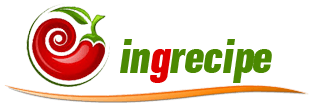What’s Scrumban? A Guide To The Scrumban Framework
The process largely depends on the parts of Scrum and Kanban you determine to make use of — so the steps might look slightly different for each team. As talked about in an empirical research on the formation of Scrumban based on Scrum and Kanban practices, Scrumban teams can decide for themselves which practices to undertake. So, since there’s no Scrumban manifesto of kinds, there may be some variations across groups attempting to mix Scrum and Kanban. Each team may come up with their own mix that works for their needs and projects. This essentially means it’s rather easy to include since it doesn’t require a particular setup or changing an organization’s current processes.
Then, other work is just initiated when some of those actions end, so there are never more tasks in progress than the number the staff deems it could handle directly. Scrumban is one of the best project management methods to adopt and will allow you to quickly streamline your workflows. Both boards are comparable, with columns representing project stages and cards representing your duties. You then move these cards into the respective columns as your tasks develop.

Scrumban is an Agile growth methodology that may be a hybrid of Scrum and Kanban. Essentially, they supply a much better insight into the duties based mostly on sure criteria. Proper threat administration would still help immensely to make sure project success. This side of Scrumban, although, certainly saves lots of time in figuring out points and permits extra time for efficient troubleshooting. We’ve gone over the differences between Scrum and Kanban and how they mix to create Scrumban as a center floor. Yet you would possibly still be wondering when to make use of Scrumban — and whether it’s the right method in your group.
What Is Scrum?
Scrumban is a hybrid project administration framework that mixes the options of the Scrum and Kanban methodologies. As an agile development methodology, Scrumban implements the highly structured framework supplied by the Scrum methodology with the extra visible and flexible development methodology of Kanban. Scrumban is a project administration framework that mixes the construction of Scrum with the flexibility of Kanban. Project groups use Scrumban to shortly visualize project progress for environment friendly course of improvement. A scrumban board is a good way to search out those bottlenecks in workflow and resolve them earlier than they become a problem. Like kanban boards, a scrumban board permits project managers to see the place essentially the most duties are and tackle the slowdown early and effectively.

If burndowns are uninteresting, then goal-setting and risky heroic efforts are unnecessary. If burndowns are uninteresting, then iteration backlogs are simply inventory for the aim of planning regularity and feeding the pull system. As such, they should be the smallest inventories possible that optimize planning prices.
Her experience in numerous B2B and B2C industries continue to drive her interest in the SaaS customer journey. Rachaelle holds a BA in Communication Studies from the University of Florida. The Scrum process https://www.globalcloudteam.com/ requires using fixed-length development cycles called sprints, which usually last between 1-4 weeks.
What’s Kanban?
To understand how Scrumban methodology works, you must first get to know at least somewhat bit about its origins – Scrum and Kanban. Both these frameworks are similar in some methods, but on the same time very different. Kanban is a visual workflow management that has roots in manufacturing. Work gadgets are represented by playing cards on a board, with lanes that symbolize course of steps.
- For many software program development teams, a direct shift to Kanban could be too drastic.
- Having priorities represented on the Scrumban board gives each staff member easy accessibility to them, rather than needing to report back to backlogs for reference.
- Still, it’s important to know the principle traits of each Scrum and Kanban first to completely grasp Scrumban.
- But, it makes use of Kanban boards to help visualize the planned work so teams can quickly see task progress and pinpoint bottlenecks.
Scrumban’s WIP limits drive each staff member to work on one item at a time and finish it earlier than transferring on to the next one. However, the benefit of that is even higher if we consider how unhealthy multitasking usually is. Interestingly sufficient, Scrumban focuses more on improving the workflow rather than reaching a set project objective, so it’s usually utilized by disciplines like HR, gross sales, and advertising. If the team realizes that they won’t manage to develop all of the scheduled features by the deadline, a triage process is carried out to prioritize the scheduled features. The options deemed to be of upper precedence shall be developed, while the rest shall be dropped.
Ensuring Secure, Inclusive Agile Events
The threshold to trigger this starting stage isn’t outlined as it is dependent upon your team’s work velocity and time wanted earlier than the next iteration starts. For the principles of flexibility and steady improvement that Scrumban stands on, holding daily meetings proves especially crucial. Second, the Progress section visualizes how duties move through the method steps.
While it’s simple to say perceive a mix of the two most popular Agile approaches on paper, implementing it virtually may be quite challenging. To make sure every thing is crystal clear, let’s overview the roles, tools, and practices that Scrumban tasks use. So, listed here are two seemingly unrelated agile methodologies that fall under the larger umbrella of project management. But just like chocolate and peanut butter, whenever you put them collectively you get one thing not solely tasty but highly effective. At its core, Scrumban is the middle ground between 2 somewhat well-liked Agile project management approaches.
Kanban is a visual-first management methodology that focuses on process enchancment by streamlining your visual workflow. In Kanban, your duties are laid out on a Kanban board to visualise the varied progress phases they’re in. The kanban approach enables the entire team to visualise what is being worked on and the place things are stuck. This method, the groups can concentrate on bettering the lead time at each course of step to shut the objects more rapidly — in different words, delivering worth to the shopper quicker.
Integrated Kanban options guarantee steady improvements of workflows and your whole project outcome. The framework additionally serves as an intermediary for people switching between Scrum and Kanban. Your groups preserve an comprehensible overview of your complicated project workflows and parts whereas having fun with versatile control of this overview. In Scrumban duties are not assigned to the group members by the team leader or project supervisor. Each team member chooses which task from the To Do part they’re going to complete subsequent.
That’s why ClickUp has a powerful Lists feature that will help you break down the sprint backlog gadgets or deliverables for each iteration. However, as Scrumban breaks down your project into smaller cycles, projects turn into far more approachable. Additionally, as these cycles are simpler to complete, your staff can feel a sense of feat quickly, motivating them to push more durable to cross the end line. Scrumban simplifies project management, will increase clarity, and will increase feelings of achievement by breaking down projects into smaller cycles. There is a WIP limit set on objects within the In Progress column; this means that only a set number of items can populate this column at any given time. Scrumban methodology began out as a way for Scrum users to step into practicing Kanban.
As properly as for those who need to clearly visualize their process and monitor duties via completion. Scrumban is a good solution for groups who need the structure of Scrum with the pliability of a flow-based technique, or for teams who wish to transition from Scrum to Kanban. Many groups use Scrumban as a transition level between a much less mature and extra mature Agile practice. They reduce chaos and promote focus by explicitly limiting what number of gadgets are in process at any given time, using a software known as WIP (work-in-process) limits. Scrum groups are designed to be small, cross-functional, and self-organizing. Teams cut up work into small, shippable product increments, and type the work by precedence and relative effort.
You can create as many statuses you want, and save them as a template for future utilization. Luckily, ClickUp’s Board view is the perfect Scrumban board on your Scrumban team. While any Agile technique like Scrum might help you streamline your work processes, it can also complicate things. The small and cross-functional team composition ensures that everybody can collaborate effectively to get things done. If you’re curious to find out more in regards to the differences between the three frameworks, learn my post on Scrum vs Kanban vs Scrumban.
Work In Progress
Nonetheless, sure circumstances render the implementation of Scrumban, rather than Kanban or Scrum, much more beneficial. Poker playing cards may be essential inside Scrum however for Scrumban, they have only little to do. They only function guides in making acceptable useful resource allocations but don’t form a part of a strict framework that must be adopted religiously.
Scrumban combines the essential structural components of the Scrum methodology with the visually intuitive administration capabilities of Kanban. However, there are few differences in how precisely these Scrum structural elements are adopted. For teams wishing to change from Scrum to Kanban or vice versa, the Scrumban framework helps facilitate this transfer. Rather than being utterly put off by the extensively differed framework of either Scrum or Kanban, teams ease into the process by way of the Scrumban framework. Scrumban combines the structured nature of Scrum with the pliability and continuity of Kanban to ship agility, effectivity, and productivity to a group.
All Plans
Combined with typical columns on a Kanban board, they create a grid that makes it easier to visualise the life cycle of duties and monitor their progress. Apart from saving time, this also encourages higher results and efficiency since the group then has more time to focus correctly on the precise duties. The Iteration Backlog is a listing of top-priority objects scrumban in hardware pulled from the Product Backlog that the team is about to finish throughout an iteration interval. Most often, it takes the form of the “To do” column on the Scrumban board. Planning meetings are held initially to identify and prioritize all current tasks and which person tales or duties to complete first.





